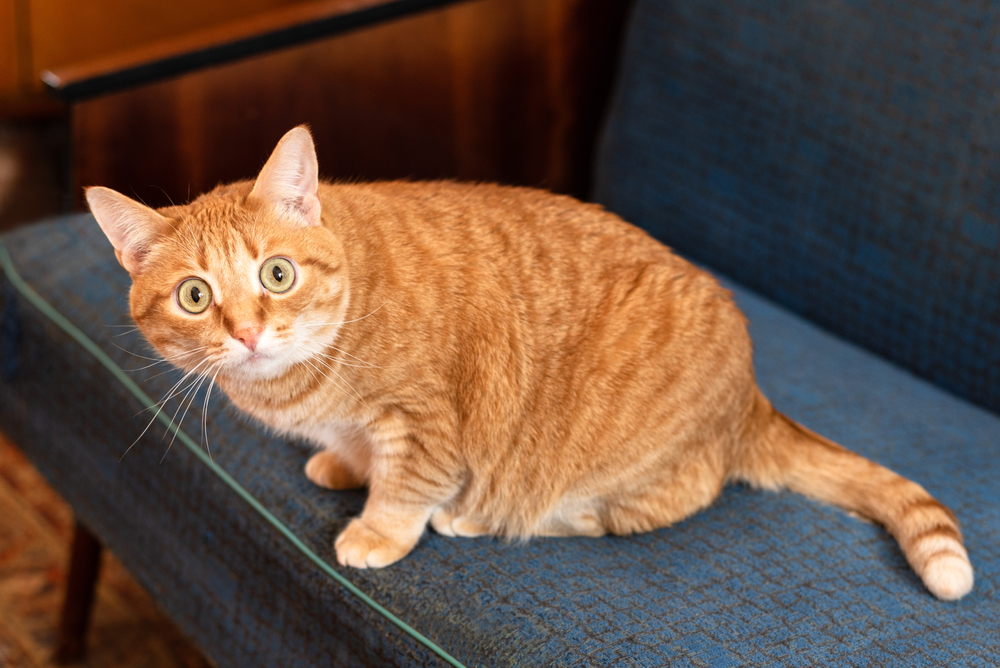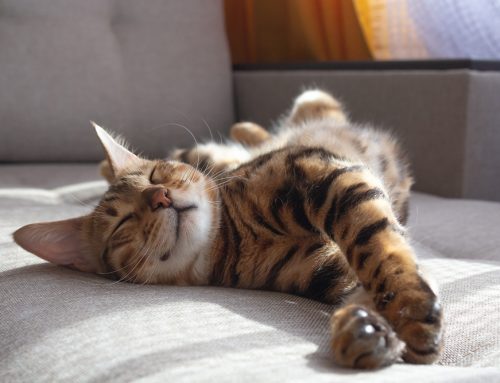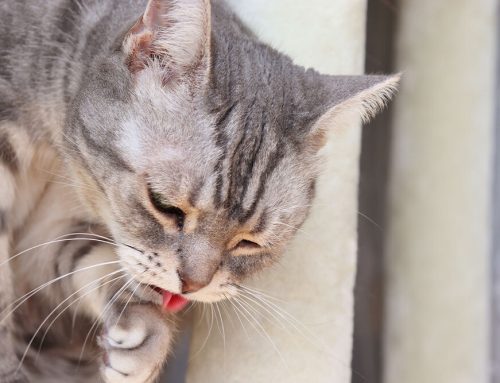Your family may enjoy Halloween, a spooky, fun holiday filled with creative costumes, dazzling decorations, and tasty treats. However, the festivities likely frighten your four-legged family member. In addition, some Halloween traditions can be downright hazardous for your pet. Our Stack Veterinary Hospital team shares five Halloween pet hazards and tips to keep your pet safe during the year’s spookiest night.
#1: Halloween treats and candy cause tummy troubles for pets
Candy is never in short supply on Halloween, giving your pet plenty of opportunities to snatch a tempting morsel from the treat bowl. However, many candies are hazardous to pets, including:
- Chocolate — Chocolate contains theobromine and caffeine, two stimulant-like ingredients that cause pets to experience cardiovascular and neurologic signs. Although dark, bitter chocolate is the most dangerous, large quantities of milk chocolate can also be toxic.
- Candy corn — This popular Halloween staple contains mostly sugar and artificial colors, which can cause your pet to experience stomach upset or other digestive health issues.
- Xylitol — This artificial sweetener, often used in sugar-free gums and candies, is toxic to dogs and can lead to rapid-onset hypoglycemia and liver failure.
- Wrappers and lollipop sticks — Candy wrappers and lollipop sticks pose a choking hazard to pets. If your pet swallows one of these items, they can develop a gastrointestinal (GI) blockage that may require surgical removal.
Keep your Halloween candy stashed in a place that’s out of your pet’s reach, and ensure children understand the importance of not sharing treats with their four-legged friend. If your pet ingests something toxic, contact our Stack Veterinary Hospital team or the American Society for the Prevention of Cruelty to Animals (ASPCA) Animal Poison Control Hotline for guidance.
#2: Open doors lead to lost pets
When you’re constantly opening the door for trick-or-treaters, your curious or frightened pet has an escape route. If your pet runs away, they risk getting lost or injured, so keep your pet secure and away from the front door on Halloween. In addition, ensure that your pet wears a well-fitted collar with your current contact information on their identification tags and that their microchip registry information is up-to-date. If your pet isn’t microchipped, schedule this quick and simple procedure with our Stack Veterinary Hospital team.
#3: Cramped costumes can be harmful for pets
While your pet is undoubtedly cute when you dress them up, a Halloween costume can be uncomfortable, restrictive, and stressful. Not all pets tolerate wearing a costume, but if you decide to dress up your pet, keep them safe and comfortable by following these tips:
- Choose wisely — Your pet can chew and swallow their costume’s small decorations, ties, and buttons. Remove all small or chewable pieces from your pet’s costume, because they are a choking hazard.
- Do a test run — Have your pet wear their costume for a short period before Halloween to see how they react. If they seem distressed or uncomfortable, forgo the costume.
- Monitor your pet — Keep a close eye on your pet while they are wearing their costume to ensure they are not experiencing discomfort or attempting to chew off any parts.
- Consider alternative options — If a costume is too much for your pet, consider less intrusive options such as a themed bandana, collar, or leash.
#4: Decorations can be dangerous for curious pets
Halloween decorations can add fun and festivity to the season but can be dangerous for pets. Potential Halloween decoration hazards include:
- Candles and jack-o’-lanterns — A curious paw or wagging tail can easily knock over a candle and cause a fire. Opt for battery-operated candles and jack-o’-lanterns, ensuring they are out of your pet’s reach.
- Electrical cords and lights — If your pet chews an electrical cord, they can be electrocuted or burned. If your pet becomes tangled in the cords, they can choke. Keep cords secured and out of your pet’s reach, or use protective cord covers, regularly checking the cords for signs that your pet has chewed them.
- Fake cobwebs and string decor — Your pet can ingest these decor items, or they can become entangled around their neck or limbs, causing your furry pal to choke or experience circulation problems. Keep these decorations well out of your pet’s reach and ensure they are securely fastened in position so they do not fall on the floor while your pet is unsupervised.
- Glow sticks and jewelry — Although glow sticks and jewelry are usually not life-threatening, if your pet chews and ingests them, the glow chemicals can cause mouth irritation and GI issues.
- Animated decorations — Moving or noise-making decorations can startle or frighten your pet, causing stress or anxiety. Introduce your pet to these decorations gradually, and limit their use if they cause your pet anxiety.
#5: Noise and strangers frighten many pets

Ringing doorbells, shouting children, and unfamiliar visitors frighten some pets, and they experience anxiety. If this sounds like your pet on Halloween, recognize that they would prefer to spend the holiday in a quiet room at home. Set up a peaceful retreat for your pet, providing them with their favorite toys, a bed, and some calming music to help keep them occupied as a way to alleviate their stress.
By following our Halloween pet safety tips, you can make this holiday enjoyable and safe for your furry pal. However, if your pet ingests candy or another dangerous item, immediately contact our Stack Veterinary Hospital team.







Leave A Comment